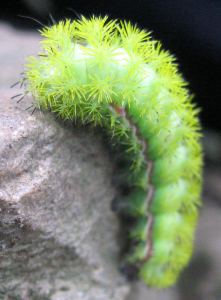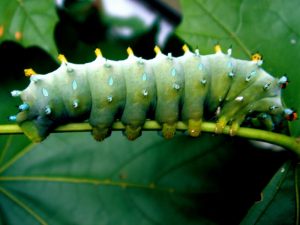Growing up in rural Alabama, I found almost every day during the summer to be an adventure. I spent my days exploring new places on the bluffs, in the fields and pastures, or fishing. This was my escape from the depressive home life my sister and I had to endure. Whenever she got the opportunity, she went to sleepover parties at her friends’ house. Me, I loved the outdoors and found serenity by taking long walks and constantly thinking about what I wanted for my future.
Ever since my father had taken me to see one of his professor’s insect collections when I was ten years old, my passion for nature and science became an early obsession. It wasn’t just about collecting and identifying insects that intrigued me. I learned that closer examinations of what was I looking at often revealed something more that I could have easily missed had I not chosen to look at nature through its layers.
For example, behind our yard was an old dirt road that was closed to traffic by the mutual agreement between my father and Burt Boykin who owned several hundred acres of cattle pastures on both sides of the dirt road. Although the road was seldom used by local traffic, the few that used it only did so for a place to drink and always leaving their litter behind after dark. Not to mention, my father had several old Mustang car bodies at the curve of this dirt road. He had caught a couple of people trying to steal parts in the middle of the night. Our dogs had alerted him that someone was near the cars, so my father shot a gun into the air, only to have a round shot back at him as the man ran away. So closing the road was also in our best interest.
A few years later, the closed road was overtaken by various weeds and by one in particular: Lespedeza cuneata, which is an Asian plant from the legume family that most highway departments use to prevent erosion. This prosperous hardy plant has thickly spiraled layers of leaves that extend from the stalk. Not an ugly plant, but once established it is almost impossible to eradicate and a commonplace plant I had most often ignored.
One day I was cutting back a roll of hedges that had grown over twenty feet in height and dragging the branches to stack at the edge of the dirt road until they could dry and be burned later. After several trips of stacking the hedges, I stopped for a few moments and stared at the bent Lespedeza plants on the path where I had dragged the branches. To this day, I honestly don’t even know how or why I spotted the thin narrow crimson line almost hidden in all the thick green leaves of these plants, but then the crimson line moved and the entire creature became visible. Crouching lower, I noticed two of them side by side, and I was thrilled.

On the Lespedeza plant were two Automeris io moth caterpillars, whose natural colors camouflaged so perfectly with the leaves that had I not seen the crimson line running along the one’s side, I’d have never known they were there. I knelt and cut the stalks of the plants and took the caterpillars to my room where I placed them into a gallon glass jar to rear the larvae to adults. Of all the caterpillars I’ve reared over the years, these and those of the Cecropia moth (Hyalophora cecropia) have been my favorites. The caution about any Automeris species, however, is that their bristled spines sting whenever you brush against them, so I knew to handle them with care.
I called my younger neighbor who often went fishing and collecting insects with me and told him about my discovery. He ran to my house to see them. Since the plants grew all down the old dirt road, we decided to inspect other plants to see if we could find more caterpillars. We found seven more about twenty yards from the first ones, but these caterpillars were in their early instars and much darker, which was what made finding the first ones so remarkable for me. From then on, whenever I was out collecting insects, I looked in places I had never done so before, not on the surface but in the layers beneath the flowers and foliage. Often, I found beetles, bees, or other insects I’d never seen before.

Nature has an abundance of layers and most go unnoticed by the human eye. It’s what’s hidden beneath the surface where the true gems can be found, and I’ve learned that writing is the same. Effective writing has layers of detail. As mentioned in a previous post, I’ve never been able to use an outline to write fiction. Outlines don’t work for me. There’s a pattern, at least from my perspective, which starts with the initial idea. I take that idea and put it on the page before the image is clear or takes flight to be seen no more. That’s the surface layer.
This must be written quickly and often without hesitating for edits until after I have gotten the idea or conversation onto the page. Then I go back to the beginning and revise. As the revision process unfolds, words or phrases are tweaked. Dialogue is added, or added to, or perhaps, some of the conversation is cut for later use. What the characters look like might become visual for me and those details are included. The plot gets strengthened. The setting becomes clearer. The conflict begins to emerge and the protagonist is suddenly sent into action with great urgency to succeed or survive until finally I reach the end. However, the story isn’t finished yet. I will go back and review each page dozens of times, revising, correcting, and tweaking, before I decide the story is complete (even then I am hesitant to say it’s done).
My earliest years in biology and nature actually gave me more insight to writing than I had even realized during those days. Artists might understand this more than they realize, but writing and painting has many layers. Neither is a one shot straight through, if one wants his/her art to hold some form of perfection. Of course, there are exceptions to the rule. There are always exceptions, right? But, for me, I know what works best. Such might be entirely different for you.
Feel free to share your writing process or observations in the comment section below.